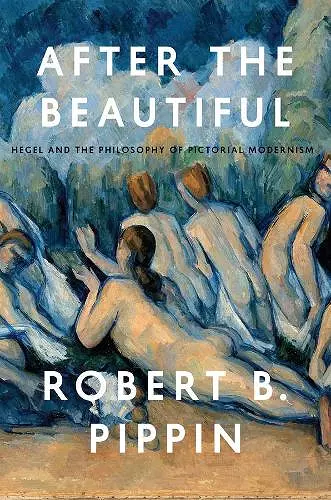After the Beautiful
Hegel and the Philosophy of Pictorial Modernism
Format:Hardback
Publisher:The University of Chicago Press
Published:10th Jan '14
Currently unavailable, and unfortunately no date known when it will be back

In his Berlin lectures on fine art, Hegel argued that art involves a unique form of aesthetic intelligibility - the expression of a distinct collective self-understanding that develops through historical time. Hegel's approach to art has been influential in a number of different contexts, but in a twist of historical irony Hegel would die just before the most radical artistic revolution in history: modernism. In After the Beautiful, Robert B. Pippin, looking at modernist paintings by artists such as Edouard Manet and Paul Cezanne through Hegel's lens, does what Hegel never had the chance to do. While Hegel could never engage modernist painting, he did have an understanding of modernity, and in it art was "a thing of the past," no longer an important vehicle of self-understanding and no longer an indispensable expression of human meaning. Pippin offers a sophisticated exploration of Hegel's position and shows that, had Hegel known how the social institutions of his day would ultimately fail to achieve his own version of genuine equality-a mutuality of recognition - he would have had to explore a different role for art in modernity. After laying this groundwork, Pippin goes on to illuminate the dimensions of Hegel's aesthetic approach via the works of Manet, drawing on art historians T. J. Clark and Michael Fried, and concludes with a look at Cezanne to explore the relationship between Hegel and the philosopher who would challenge Hegel's account of both modernity and art - Martin Heidegger. Elegantly interweaving philosophy and art history, After the Beautiful is a stunning reassessment of the modernist project and what it means in general for art to have a history. It is a testament, via Hegel, to the distinctive philosophical achievements of modernist art in the unsettled, tumultuous era we have inherited.
"There is a fair amount of philosophical literature about whether Hegel could accommodate modern, post-1840s art within his philosophy, but that field usually divides into the 'Yes, he can,' and 'No, he cannot' camps. Both camps generally argue on the basis of canonical Hegelian texts, differing only on the implications they draw from those texts. In After the Beautiful, however, the historical Hegel himself is drawn into criticism under Robert B. Pippin's contemporary interpretation-called to alter his original account in certain key areas if he is to stay true to his original program. This is a very ambitious way of doing philosophy, and Pippin pulls it off very well." -Terry Pinkard, Georgetown University"
ISBN: 9780226079493
Dimensions: 24mm x 16mm x 2mm
Weight: 397g
176 pages